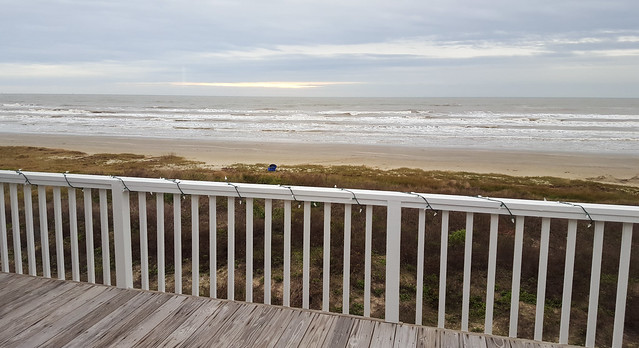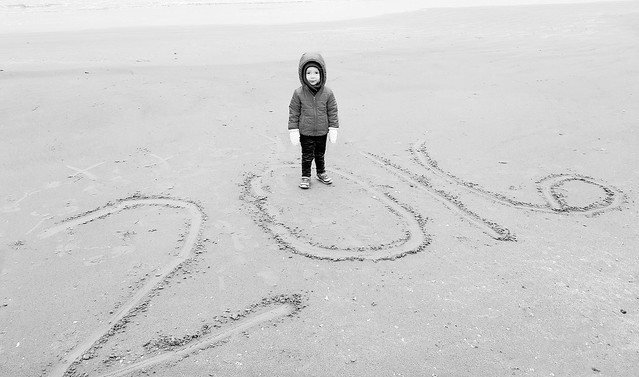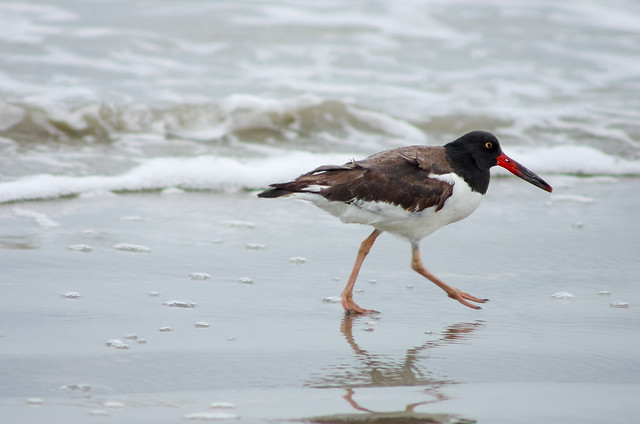This is a view I could get used to.
Christmas was a mad rush of travel back and forth across New York State, presents flying about, barely enough time to say hello before we said goodbye, the usual. When some friends invited us to sojourn on down to the coast for a (relatively) quiet New Year's, it was a welcome shift of pace.
Galveston and I have a love/hate relationship. I love the wildlife, and the theoretical concept of beaches near Houston. I dislike the sprawl, oil rig vistas, and the chocolate-milk that passes for water in the Gulf. Thankfully, our gracious hosts have a place on the beach in the quieter west end of the island.
Even with nine adults, six young kids, and a dog packed in the house on a rainy weekend, it was a relaxing time. Drinks were drunk, beaches were walked, good food was eaten, legos were lego'd, There were even some home-brewed fireworks displays on the beach. We had limited TV service, so we ended up watching some bizarre countdown on NYE (Miami? Which for some reason was playing for Central time?). I managed to get in my traditional first hike of the year on New Year's day. All in all a fitting way to end a stressful year before we charged back into 2016, and I into year 40.
Lydia found 2016.
Driftwood and Waves
First wildlife species of the year, an American Oystercatcher. Not too shabby.
Yellow-throated Warbler is a bird I usually have to dig for, and rarely see. I've never gotten a real picture of one. This one flew onto the railing 6 feet from me and posed patiently. 2016 off to a good start, bird photography-wise.
For some reason I found this sign hillarious. It seems like an old WWII poster calling on citizens to report Japanese subs or something. "Report those Turtles IMMEDIATELY...so we can destroy them! For Freedom!"
























